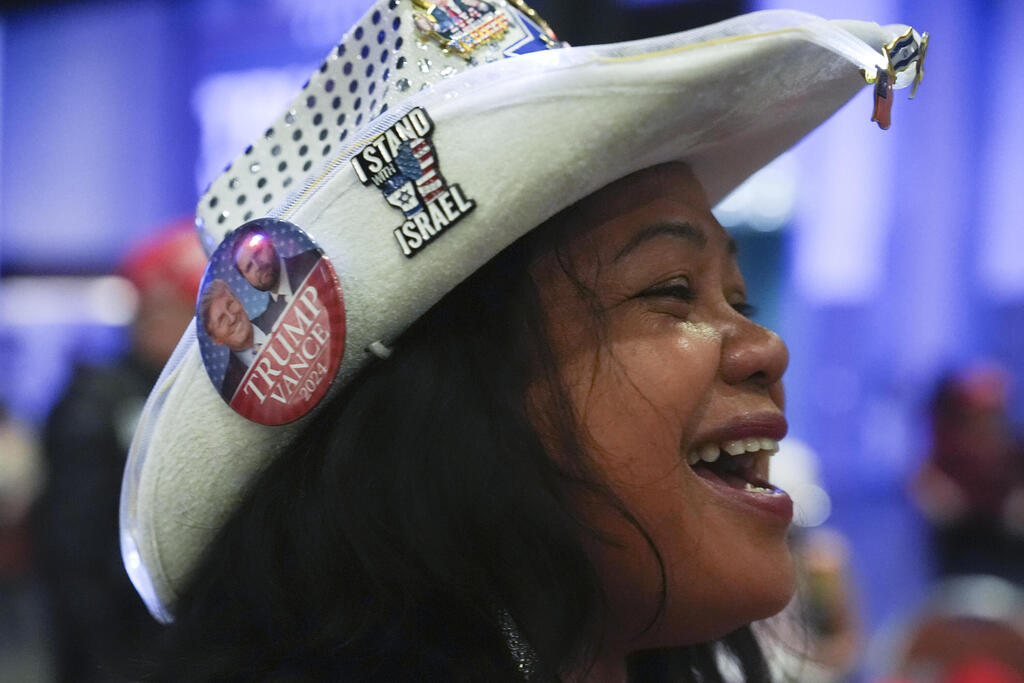Getting your Trinity Audio player ready...
In cities and suburbs, among college graduates and non-graduates, and particularly among Latinos, support for Donald Trump has gone up compared to four years ago, resulting in a decisive victory over Kamala Harris in a historic election that could significantly impact both the United States and the world at large.
Until now, only one American president, Grover Cleveland, had served two non-consecutive terms, back in 1893. Trump became the second, four years after losing to Joe Biden. He currently leads Kamala Harris with 280 to 226 in the Electoral College and is expected to win all seven key states, reaching 312 electors—a feat not achieved by any Republican candidate since George H.W. Bush in 1988.
Trump's victory speech
(Video: Fox News)
As the 45th president, who will become the 47th president upon his second inauguration on January 20, 2025, Trump leads Harris by a significant margin of 5 million in the popular vote. This marks the first time in 20 years, since George W. Bush's victory over John Kerry, that a Republican candidate has won the popular vote. In Trump's previous victory eight years ago, Hillary Clinton garnered a majority of votes nationwide.
A comprehensive analysis by the New York Times revealed that Trump's victory was not only due to success in key states but also crossed districts and sectors. Of the districts where vote counting was completed, more than 90% shifted toward Trump, indicating an increase in support compared to 2020.
Trump improved his performance in no less than 2,367 districts compared to the previous election, while his support decreased in only 240 districts. Another 536 districts were not included in the calculation due to a small number of votes. He also won in Starr County, South Texas, a Democratic stronghold since 1896. In the 2016 election, Hillary Clinton received 76% of the votes there compared to Trump's 19%. Four years later, Biden won by a narrow majority of 52%, and now Trump has completed the turnaround. The main reason for this is likely the dramatic increase in the number of illegal immigrants arriving from Mexico to the area since Biden's election as president.
In states where Trump was expected to win by a small margin, like Florida, Texas, and Iowa—where the pollster with the best record in the United States even predicted he would lose to Harris—he won by a double-digit margin. Conversely, in states where Harris was expected to win but not easily, like Minnesota, Virginia, and New Hampshire, her advantage was much narrower, at 5% or less. Her main failure was in the key states. Trump won in all four decided states—North Carolina, Georgia, Wisconsin, and Pennsylvania—and is also confidently leading in the remaining three: Nevada, Arizona, and Michigan.
One of the main factors in Trump's decisive victory was the change in voting patterns among Latinos and a smaller change among Black voters. Harris focused her campaign on attacking Trump as a dangerous former president seeking revenge, but exit polls showed that voters believed he would better address their top priority—cost of living and inflation.
Trump did not win a majority among these two groups, but among Latinos, he received 45%, a significant increase from 32% in the 2020 election against Joe Biden. Among Black voters, his support was 13%, compared to only 8% in 2020.
Most of Trump's support among these minorities came from Latino men, leading to a dramatic increase in his support in Philadelphia, Milwaukee, Detroit, and other major cities in key states. According to NBC's exit polls, Trump received 54% support among Latino men, compared to only 36% in 2020.
The Times analysis also showed that the biggest change was among Hispanics. In 228 districts where at least a quarter of the population is Hispanic, Trump received 9.5% more compared to the previous election. In 290 districts where less of the population is white, his support increased by 6.9%.
But the increase in support crossed sectors, including districts where Trump won by more than 20% in 2020, as well as those where Biden won big that year. In 460 suburban districts, support for Trump increased by 4.3%, compared to an almost opposite change in 2020. In the cities themselves, the jump in support was even greater—5.2%. A significant increase in support for the Republican candidate was also recorded in districts where at least half of the population is college-educated, in those where many did not continue post-secondary education, in districts with a large elderly population, and in those with a large population of young people aged 18 to 34.
In the final stretch, many believed that a joke made by comedian Tony Hinchcliffe at a Trump rally—where he compared Puerto Rico to a "floating garbage island"—would bring many Hispanic voters back to the Democrats. But that did not happen. Arturo Munoz, a truck driver from Phoenix, told "USA Today" that this statement did not cause him to change his decision to vote for Trump, citing the economic distress compared to four years ago as the main reason not to vote for Democrats.
"Hispanic and Latino men work in hard physical jobs. We bust our asses every day. And we clearly see the gap compared to 2020 in wages, hours, cuts, the ability to help the family," he said. Trump achieved the best result for a Republican candidate among Latinos, who make up 12% of the electorate, since George W. Bush received 44% of their votes in 2004.
The issue of abortion was expected to play a central role following the dramatic Supreme Court decision, and according to voters, it was the third most important issue—but still, the economy and the future of democracy superseded it. Trump won by a large margin among those who prioritized the economy, while most who viewed the future of democracy as the main issue chose Harris. Ultimately, economic difficulties made the difference—Trump won by a huge margin of 40% among the two-thirds of voters who stated that the economy was "not so good" or "bad."
Get the Ynetnews app on your smartphone:







